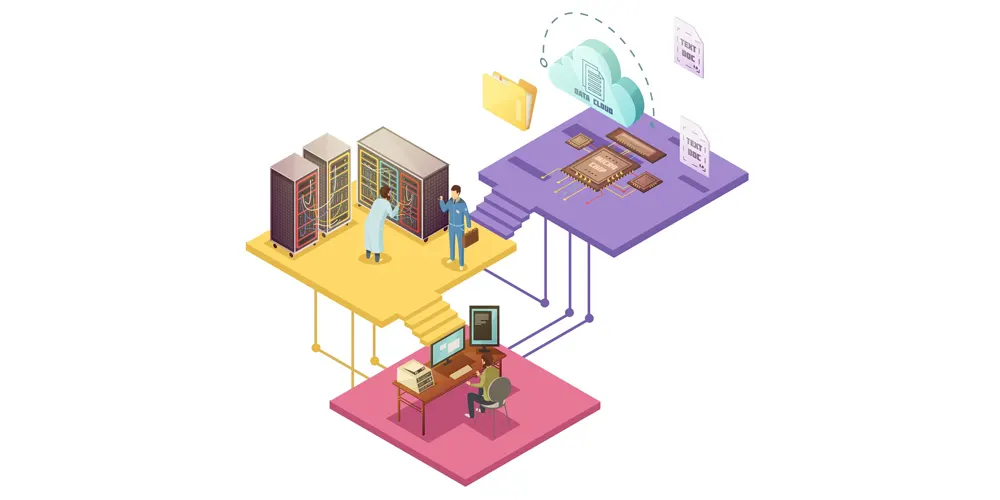5 Ways SBCs Facilitate Unified Communications as a Service
UCaaS providers have seen tremendous growth in business since the onset of the Pandemic. These being a one-stop solution for all of a business’s communication needs have catapulted them over everyone else.
Earlier in the day, you had standalone applications and platforms for specific forms of communication. Back in the day, Skype was considered the best for Video Calling and BlackBerry Messenger was all the rage in business circles.
But now we have Zoom, Slack, Microsoft Teams, etc. Many of you have your own UCaaS systems with the aim of dethroning the giants mentioned earlier. For that, you need stability, scalability, redundancy, high availability, QoS and load balancing.
What if there was one device that could provide all these solutions? There is and it is known as a session border controller.
In this article, we will cover the basics of SBCs, what role they play in enhancing a UCaaS network and how they can help you scale operations seamlessly!
We’ll start off with some basics!
Understanding Session Border Controllers (SBCs)

Imagine SBCs as the vigilant guardians in the world of VoIP and Unified Communications as a Service (UCaaS). They are the formidable gatekeepers that stand between your communication networks and the vast, unpredictable internet.
Their primary function is to control and protect the sessions of communication happening within these networks.
In essence, SBCs are the wise gatekeepers who monitor, manage, and secure real-time voice and video sessions. They ensure that the virtual doorways of your communication remain impervious to threats while facilitating seamless interactions.
How do SBCs act as Intermediaries in VoIP and UCaaS Networks?
Picture SBCs as the toll booth on the bridges of the digital age. When you make a VoIP call or use a UCaaS system, you're sending your communication through a series of digital pathways.
SBCs step in as intermediaries, creating a secure, managed flow of traffic through these digital communication bridges.
They perform vital tasks like protocol translation, ensuring that different communication devices can understand each other's languages. They also handle call routing, so your voice or video travels efficiently from one end to the other.
Importantly, they act as traffic cops, controlling the flow of data to prevent congestion or unauthorized entry, thus maintaining QoS and Security.
Key Characteristics of Effective SBCs for UCaaS
Effective SBCs in the realm of UCaaS possess qualities akin to the Jedi Master Obi-wan – they are reliable, sharp, and protective. Here are some key characteristics:
- Security Fortresses - They can detect and fend off threats like cyber attacks. Their firewall capabilities protect against malicious intruders, ensuring your communications remain confidential.
- Quality Assurance - QoS is actively managed by SBCs, thus ensuring your voice and video streams are always crystal clear. They monitor and optimize bandwidth usage to prevent jitter and lag.
- Scalability Wizards - Effective SBCs can readily adapt to your needs. Whether your traffic grows or shrinks, they can scale smoothly to accommodate more users and devices.
- Interoperability Alchemists - SBCs are Google Translate for the tech world. They transform incompatible communication protocols into harmonious conversations. They make sure your different devices and networks speak the same language.
With their vigilant and versatile nature, SBCs are the unsung heroes of modern communication networks.
Now that you know the basics, let’s find out how SBCs help enhance UCaaS networks.
The Role of SBCs in Enhancing UCaaS
The roles might seem similar to those discussed in characteristics. However, we will be diving into the details of how differently those roles are played specific to UCaaS needs.
1. Ensuring Network Security and Privacy

Session Border Controllers enhance UCaaS networks by bolstering network security and ensuring privacy. Their firewall capabilities act as the first line of defense, creating a robust shield against cyber threats.
These digital sentinels monitor and filter incoming and outgoing traffic. This allows them to thwart unauthorized access, DDoS attacks, and other malevolent intrusions.
Moreover, SBCs employ advanced cryptographic techniques to encode sensitive data during transmission. This encryption fortifies the confidentiality of voice and data, safeguarding against eavesdropping and data breaches.
When data reaches its destination, SBCs seamlessly decrypt it, ensuring that sensitive information remains accessible only to intended recipients.
In this way, SBCs address all the security and privacy concerns of the businesses and individuals wanting to use your UCaaS system.
2. Quality of Service (QoS) Management

Imagine being in the midst of an important negotiation and the audio is unclear or the video stream stops. Sounds frustrating, doesn't it? Such occurrences can leave your customers furious and they might leave your UCaaS platform for another.
Session Border Controllers help in elevating the QoS in UCaaS networks. They act as always active Quality Control Managers managing the flow of traffic. Prioritizing and optimizing voice and video traffic is how they ensure high QoS levels.
By identifying and categorizing different types of data, SBCs ensure that critical real-time communications receive top priority. This orchestration guarantees that voice and video calls remain clear and uninterrupted.
Additionally, SBCs function as maestros of bandwidth management. They dynamically allocate and regulate available bandwidth. This ensures that communication flows smoothly even during peak usage periods.
The agility provided by SBCs helps prevent network congestion, mitigates packet loss, and minimizes jitter. Thereby preserving the quality of UCaaS services.
3. Interoperability and Protocol Translation

Again, imagine an important business meeting between you and some important Chinese or African firm. You don't speak their language nor do they speak English. Now wouldn’t this lead to a complete communication breakdown?
Different devices, communication systems and networks use varying technologies and protocols for communication. SBCs serve as essential intermediaries in the realm of UCaaS, excelling at ensuring interoperability and protocol translation.
Like multilingual diplomats, they bridge different communication protocols. Thus, facilitating seamless conversation between various devices and networks.
SBCs possess the unique ability to decode and interpret the diverse communication protocols used by different UCaaS platforms and networks. They act as translators, converting these protocols into a common dialect that all devices can comprehend.
Thus ensuring that disparate systems can communicate harmoniously, overcoming the challenge of incompatible protocols.
4. Network Reliability and Redundancy

Consider the same scenario as before. This time the audio and video are clear and everyone speaks the same language. However, this time the call disconnects unexpectedly. Infuriating still, right? This is where reliability and redundancy come in.
SBCs are instrumental in bolstering network reliability and redundancy within UCaaS ecosystems. They facilitate uninterrupted communication by implementing failover mechanisms that ensure high availability.
SBCs monitor network conditions and swiftly divert traffic when they detect an issue or failure. This redundancy guarantees that UCaaS services remain accessible, even in the face of unexpected network hiccups or outages.
Furthermore, SBCs excel as load balancers. They distribute network traffic evenly across multiple servers or paths. Thus, service disruptions arising out of overloads or bottlenecks are prevented.
This dynamic load management not only optimizes resource utilization but also enhances the resilience of UCaaS networks.
5. SIP Trunking and Call Routing

There will come a time when you will land big clients. The types that have multiple global locations and want to interconnect all of those for streamlined communication. To facilitate these needs you will need SIP trunking and Intelligent Call Routing.
Session Border Controllers are very effective at these two functions. They act as the air traffic controllers of the digital communication landscape, skillfully directing calls to their intended endpoints with precision.
SBCs analyze session requests and match them to the appropriate endpoints. They optimize the routing path, ensuring that calls reach their destinations swiftly and reliably.
SBCs also serve as the gatekeepers for external communication by handling SIP trunk connections. They establish and manage these connections with external networks.
Acting as intermediaries, they facilitate secure, high-quality, and cost-effective communication beyond the confines of the UCaaS ecosystem.
This ensures that organizations can seamlessly interact with external parties. Irrespective of whether they are customers, partners, or other entities, while maintaining control, security, and efficiency.
SBCs and Scalability in UCaaS

Growth in terms of your customer’s communication requirements can often be unexpected and sporadic. As a UCaaS operator, you need to have enough measures in place to accommodate rapidly growing communication requirements.
Session Border Controllers not only help Carrier-grade networks when it comes to scalability but also UCaaS systems.
Supporting the Growth of UCaaS Providers
SBCs act as active measures for UCaaS providers' expansion plans. As these providers aim to reach a broader customer base, SBCs enable them to scale seamlessly.
They facilitate the onboarding of new customers and organizations. Thus, efficiently managing the integration of their communication systems into the UCaaS infrastructure.
This means that providers can readily accommodate a growing roster of clients without compromising service quality.
Elastic Scaling with SBCs to Accommodate Varying Workloads
The beauty of SBCs lies in their ability to scale elastically, much like a well-stretched rubber band. When workloads fluctuate SBCs dynamically adjust to handle the increased traffic. Seasonal peaks or unexpected usage surges cause such fluctuations.
They distribute resources intelligently, ensuring that call quality remains high, even under heavy loads. This elasticity enables UCaaS systems to flexibly meet the demands of diverse user scenarios.
Handling Increased Call Volumes During Peak Usage
SBCs efficiently manage large call volumes during peak usage periods. These may include the holiday season, virtual conferences or product launches.
They distribute traffic evenly across servers, preventing bottlenecks and service degradation. This ensures that users experience reliable and uninterrupted communication, regardless of the intensity of demand.
That should’ve made it clear to you how beneficial SBC can be to your UCaaS network. In case you’re already convinced and want to employ SBCs in your network, make sure to follow these best practices.
Best Practices for UCaaS Providers
Session Border Controllers are almost always beneficial for any communication network. However, if you can magnify the positives by following these best practices.
Selecting the Right SBC Solution for Your UCaaS Platform

Session border controllers come in various shapes and forms. Start by considering requirements such as scalability, security features, interoperability with UCaaS components, and compliance requirements.
Engage in thorough vendor evaluation and testing to determine which SBC solution best complements your infrastructure. The goal is to select an SBC that seamlessly integrates into your network while enhancing reliability and performance.
Implementing SBCs Effectively into Your Network Architecture

The successful integration of SBCs requires a well-thought-out network architecture. Start by defining clear traffic routing policies and security rules. Ensure that your SBCs are strategically placed at network edges to protect against external threats.
Configure them to handle protocol translations, traffic optimization, and load balancing effectively. Collaborate closely with your network team to establish a robust architecture that optimizes call routing, minimizes latency, and guarantees high availability.
Monitoring and Maintaining SBCs for Optimal Performance

After deployment, continuous monitoring and maintenance are vital. Implement comprehensive monitoring tools to track call quality, network performance, and security threat analysis.
Regularly update SBC firmware to patch vulnerabilities and add new features. Periodically review SBC configurations to align them with evolving business needs.
Engage in proactive capacity planning to accommodate growth and sudden spikes in traffic. Establish clear incident response procedures to address any issues promptly.
Following these practices should help you amplify the benefits SBCs have to offer your UCaaS Network!
To Conclude With
Session Border Controllers have a lot to offer to any communication network. Security, traffic management, scalability and load balancing happen to make up the core of it.
UCaaS systems and networks are unique as they offer all forms of communication capabilities from a single point. Businesses can benefit drastically from such capabilities and SBCs enhance them further.
I'm sure this article has helped you in more ways than one. ConnexCS has helped many UCaaS operators achieve tremendous growth. Click here to check an example!
























































































































